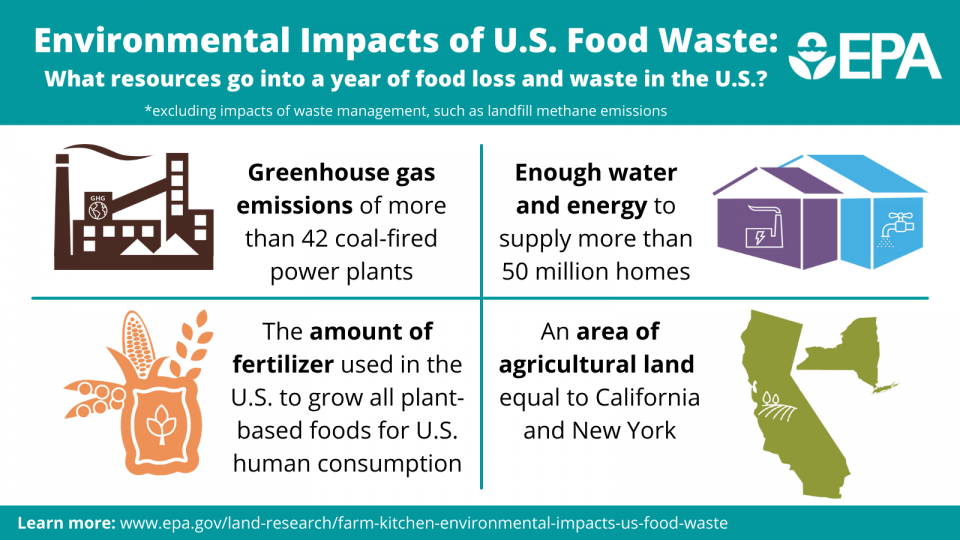It is no secret that America wastes a lot of food. Each year this country wastes 40 million tons of food, the largest contributor to the shocking and disturbing global amount of 1.4 billion tons. There are various reasons why America’s food waste is so high, the first being that consumers overbuy. Food security is a massive issue in this country, and it has been exacerbated by the pandemic. People are over-purchasing food more than ever. Most of the time, people cannot eat all this food and end up throwing it out. Overproduction is also an issue. A lot of food is thrown out for going bad before it is even purchased. While there are many complicated reasons why food waste occurs, one thing is clear as day: this has to end now.
As outlined in the graphic below, greenhouse gases, water and energy waste, fertilizer use, and land are the largest concerns.

We’ll start with greenhouse gases. The machinery, production, and transportation of food requires the burning of a lot of fuel. With greenhouse gas emissions being one of the greatest threats to climate security, we can not afford to produce so many unnecessary gases. Additionally, when food decomposes in a landfill, large amount of methane are released, even further increasing the carbon footprint of food waste.
Water and energy are resources wasted when food is not produced responsibly. Electricity that could be used to power homes, buildings, and more is instead being used to produce food that will ultimately go to waste. Water, being one of the most important resources in the world, is not something we want to be misusing either. Not only is the water treatment intensive, but millions of people accross the world do not have access to clean water, and yet it is something we continue to waste.
Fertilizer is one of the less obvious impacts of food waste. Many fertilizers contain phosphates and nitrates that seep into the soil when crops are watered. This agricultural runoff eventually makes its way into streams and rivers, potentially doing serious damage to the ecosystem. High concentrations of these products can be toxic to fish, and it bioaccumulates up the food chain, ultimately harming humans as well. These chemicals can also cause algal blooms. This is when large amounts of algae grow in a water ecosystem and essentially use up all the oxygen, making the surrounding water toxic and desomating the ecosystem.
Finally, comes land use. Almost one third of America’s food production ultimately goes to waste. This also means we are wasting a third of our agricultural land! This is land that could instead be restored into wilderness areas to benefit wildlife.
This is a large and overwhelming issue, and as an individual, it can be hard to know where to start or how you can make a difference. Well, the best place to start is right at home. Start by buying less grocieries and keeping better track of when your food will go bad. And while you’re here at PSU, maybe put a little less on your plate when you stop at the buffet!
Images and references:
https://www.bbc.com/news/science-environment-56271385
https://www.epa.gov/land-research/farm-kitchen-environmental-impacts-us-food-waste#:~:text=Impacts%20include%3A%20greenhouse%20gas%20emissions,to%20California%20and%20New%20York.
https://moveforhunger.org/the-environmental-impact-of-food-waste


